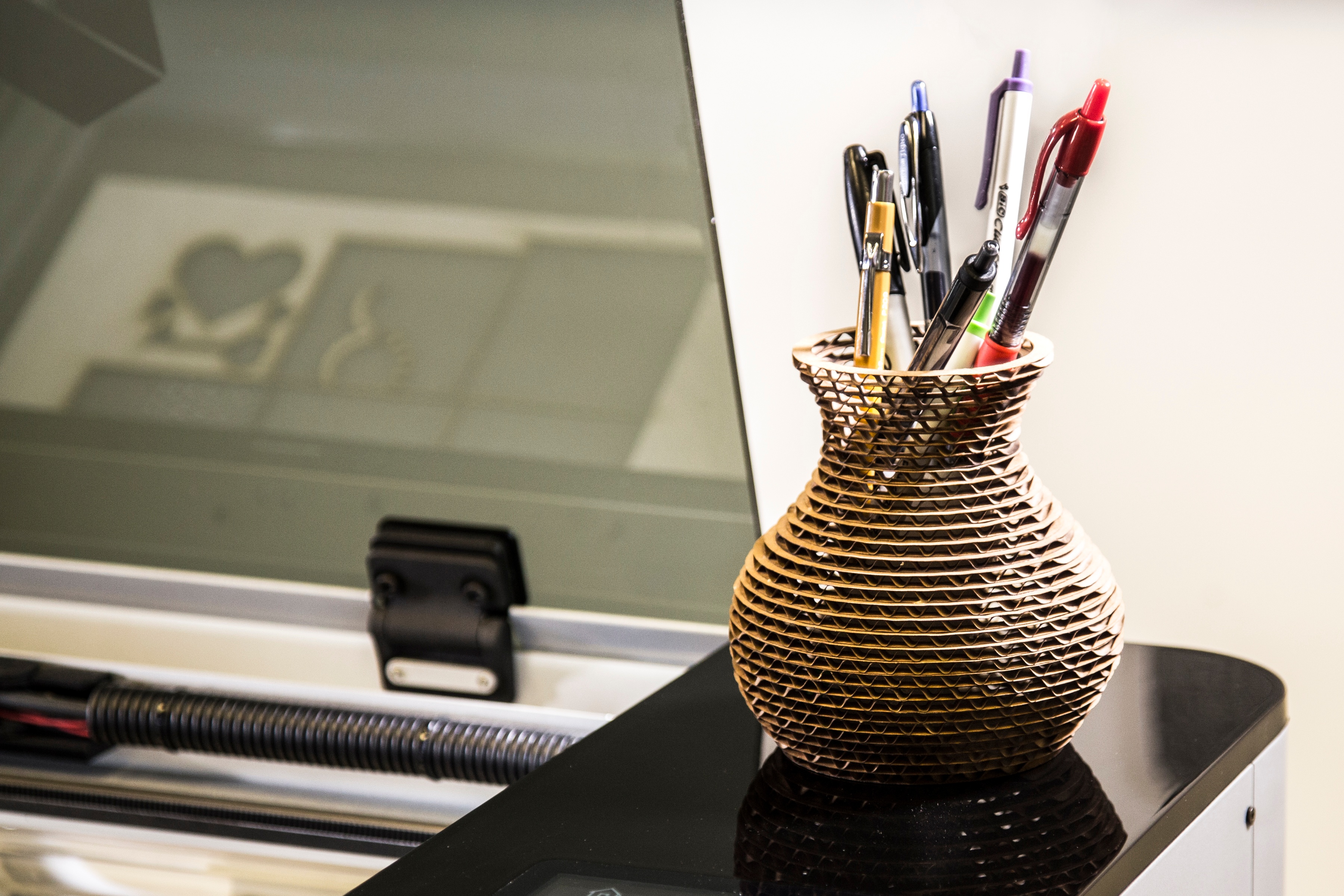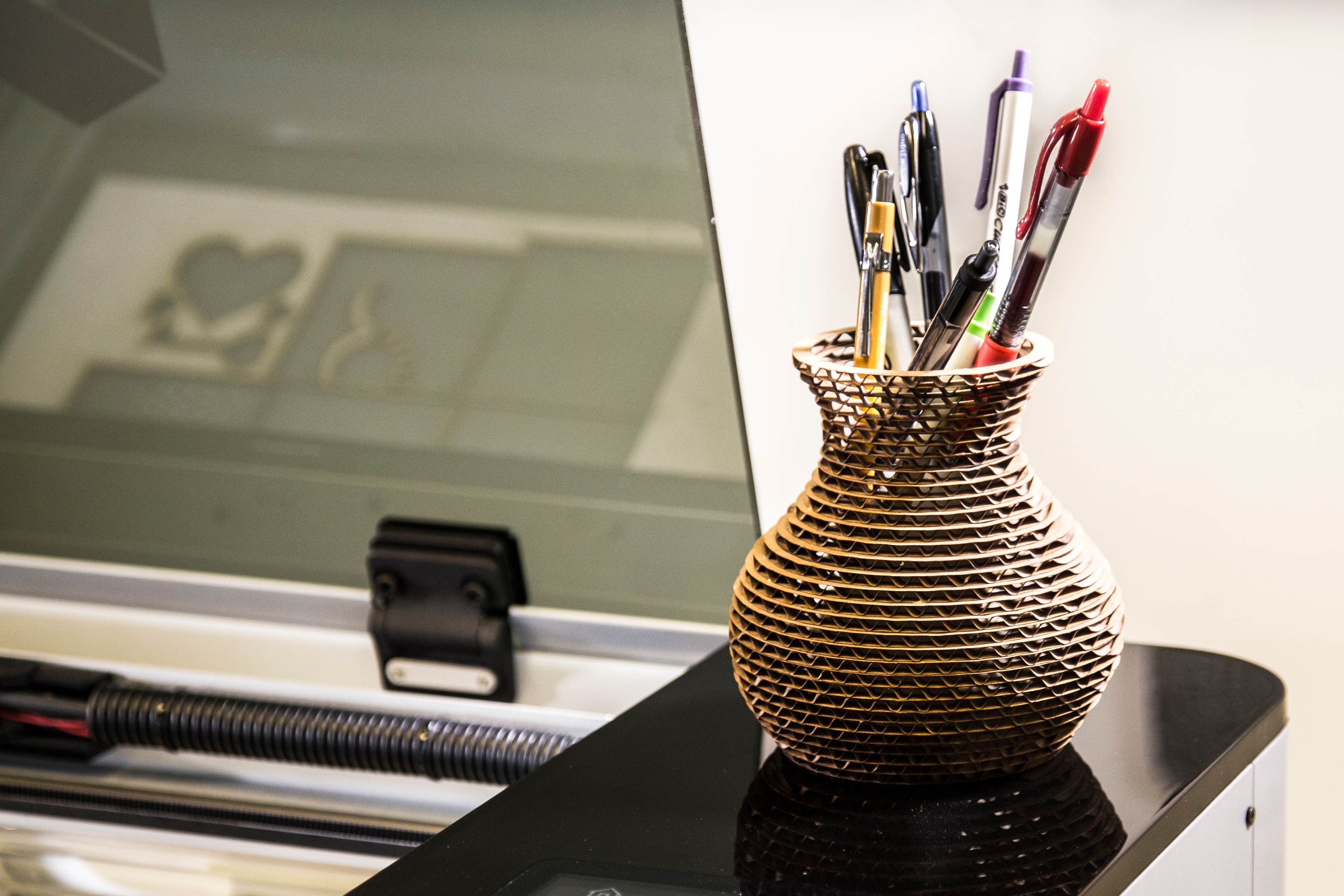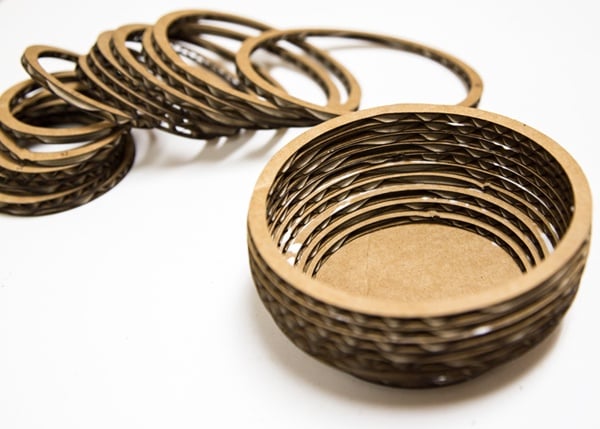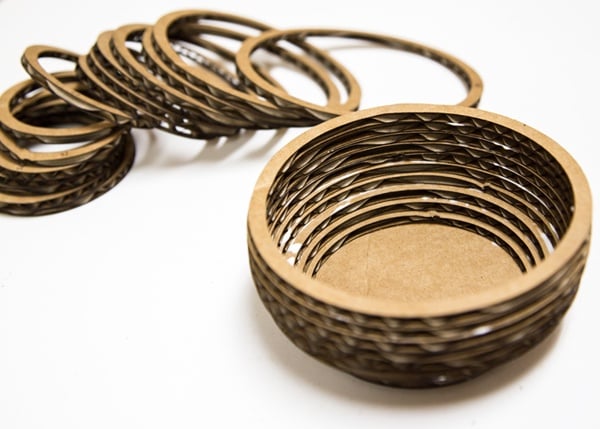3D Stacking Sculptures: Create spectacular 3D sculptures with design software like Autodesk 123D Maker.
Cosplay and Costumes: Build larger than life costumes with inexpensive cardboard boxes that transform into complex giant robots or vehicles.
Art Projects: Experiment with cardboard art projects before advancing to wood and acrylic.
3D Topography Maps: Implement fantastic 3D wall maps or 3D tactical grid maps for tabletop gaming.
Lamps & Table Decorations: Discover slotting techniques to build unique lighting and office decor.
Stencils: Design and cut perfect stencils and save a giant library of styles.
Toys: From cardboard houses for paper dolls to geometric blocks for toddlers, cardboard toys are cheap, easy to make and fun for all.
VR Goggles: Build your own custom VR goggles using your cell phone and some cardboard.
Model Train Scenery and Dioramas: Enhance the scenery and create 3D terrain and environments.
Cardboard Considerations
Flutes: Corrugated flutes present an issue for rastering cardboard, as they can be exposed unevenly and look bad.
Highly Flammable: Corrugated cardboard is especially prone to catching fire, as the structure creates air pockets that allows oxygen to penetrate the material.
Approach
General Approach
Closely monitoring your job is crucial to quickly eliminate any flames from becoming fires. Be fire conscious and prepared when lasering cardboard. General settings for paper will start with low power and high speed.
Cutting Cardboard
Running two lower power passes on corrugated cardboard is best for output, This way the first pass penetrates the top layer as the second pass goes through the corrugation and bottom layer. This is a precautionary measure as setting one pass with a high power setting to go through the whole piece all at once might flame up.
Engraving Cardboard
Rastering doesn’t work well with corrugated cardboard, unless you like the look of exposed flutes. Non-corrugated cardboard can be rastered normally, but also with limited results
Marking Cardboard
Cardboard marks very well, with Low Power, High Speed settings.
Finishing Tips
3D Stacking: Cardboard is light and tends to shift when constructing 3D objects. Doles can be added in the design stage to help stabilize the assembly process.







